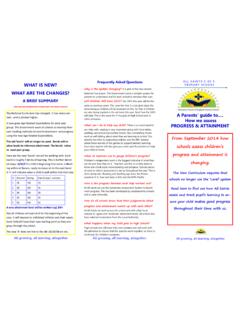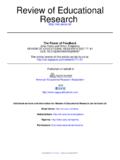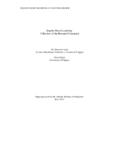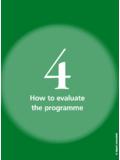Transcription of All Saints Church of England Primary School …
1 1 Marking Policy Jan 2015 Introduction feedback is one of the most powerful influences on learning and achievement (Hattie and Timperley 2007, Review of Educational Research March 2007, Vol. 77, No. 1, pp. 81 112 ) In Hattie s research 1999 comparing 500 meta-analysis of over 180,000 studies involving 20-30 million pupils, the power of feedback to impact on learning outcomes was on average twice the size of other influences on achievement including direct instruction, reciprocal teaching, prior ability, reduced class size and other factors such as socioeconomic factors. However feedback has the power to impact both positively and negatively on pupil performance. In order to be positively effective .. feedback must answer three major questions asked by a teacher and/or by a pupil: Where am I going? (What are the goals?)
2 , How am I going? (What progress is being made toward the goal?), and Where to next? (What activities need to be undertaken to make better progress?) (ibid p86) This policy sets out how the use of effective marking, feedback and response is consistently utilised across our School to benefit Primary aged pupils. Effective feedback given to pupils through marking and reviewing work will provide constructive steps for every pupil to ensure progress. It will focus on success and improvement needs against learning intentions and success criteria; enabling pupils to become reflective learners and helping them to close the gap between current and desired performance. At All Saints this important stage of the teaching and learning process is also called Developmental Marking Effective Marking & feedback Policy All Saints Church of England Primary School 2 Marking Policy Jan 2015 1. Aim The aim of this policy is to ensure clear understanding of the purposes, procedures and processes of effective marking and feedback to pupils regarding their work in order to maximise progress and support pupils in becoming affective learners.
3 Effective marking and feedback is integral to good teaching and learning processes. By empowering pupils to be actively involved in understanding how they are making progress, it helps to embed learning swiftly and enables accelerated learning. Effective marking and feedback aims to: 1. Inform the pupil what they have done well and what they need to do to improve. 2. Support pupil confidence and self-esteem in learning, and contributes to accelerated learning. 3. Support teachers assessment knowledge of each pupil as part of thorough assessment for learning procedures, in order to plan and refine next steps in learning. 4. Develop consistent processes across the School to teach pupils to respond to feedback , self-assess and evaluate their own learning. 2. Processes Four types of marking and feedback occur during teaching and learning at All Saints : i).Teachers well considered intervention to prompt deeper thinking, and swiftly address misconceptions during lessons.
4 This takes the form of verbal feedback and occurs through effective questioning to clarify or refocus tasks and enquiry, mini plenaries and mid-lesson adjustments. It may also be verbal feedback given during a 1:1 learning conference with a pupil or in on a group basis. For younger pupils this can be noted down to record the feedback and response process. ii) Light marking of work, acknowledging and recognising attainment and/or progress, success and/or completion of pupils work. iii) Developmental Marking in which incisive feedback on attainment and success is given and response from pupils is required to strengthen the teaching and learning process in order to accelerate and deepen learning. iv) Self-assessment and peer assessment of the attainment and success of a piece of work. This policy sets out the procedures agreed by the School to ensure a consistent and impactful approach to Effective Marking and feedback at All Saints 3 Marking Policy Jan 2015 Procedures for Marking.
5 All marking is to be carried out in green pen All marking is to be done in a clear legible hand aligned to the School handwriting script. The marking code is to be followed in all cases. (see Appendix 1) The marking code should be accessible to all pupils in the learning environment All pupils work is to be at least light marked by Teacher or Support Staff. In both Maths and Literacy at least 1 piece of work per pupil should be developmentally marked in depth per week. In developmental marking: When identifying specific success, the respective work in the pupils book (literacy or maths) will be identified in green highlighter. The corresponding comment will also be highlighted green. When identifying an area for specific improvement the respective work in the pupils book (literacy or maths) will be identified in pink highlighter. The corresponding comment will also be highlighted pink or When identifying an area for specific extension the respective work in the pupils book (literacy or maths) will be identified in pink highlighter.
6 The corresponding comment will also be highlighted pink There will be a maximum of 2 identified specific areas for both pink and green highlighting for each piece of work. feedback comments must be constructed to require response by pupils, at an appropriate level of challenge, and such tasks must be completed by pupils. When developmentally marking writing, attention should be given to spelling, grammar and punctuation in line with the stage of development of the individual and strategies used to support their development. This will be done in line with the marking code. If a response is required for spelling no more than 3 spelling corrections for a piece of work will be given. To manage marking stick-it notes may be used to identify where response is required, or to enable the pupil to transfer a comment forwards to the next piece of work Self-assessment Pupils will traffic light their work against their learning objective accordingly Red: I find this difficult 4 Marking Policy Jan 2015 Amber: I can do this but need more help to feel confident Green I can understand and do this and this shows in my work (If a Learning Objective refers to Success Criteria for example key features of a text type or genre in literacy - then it is useful for this to be stuck into the exercise book so the child can self-assess against all aspects) Peer Assessment Where peer assessment has been appropriately introduced, pupils will identify one positive aspect of work and suggest one area for improvement.
7 This can be done in any colour but not green or purple and the peer assessor s initials must be also left. Responding to comments Pupil response to comments should be made in purple so that it is clear they have been completed. If in KS1 or FS this is verbal, it should be recorded at such. Response should be made as soon as reasonably possible in order to support pupils effectively. Rewards: as Adults in School we want to recognise good work with stickers, house points, smiley faces etc. However empty praise is as ineffective as empty criticism, therefore specific praise is preferred whenever possible to boost the confidence and self-esteem of our young learners. 3a) Procedures in greater detail: 3ai) The Frequency of Developmental Marking All pupils work is to be at least light marked by Teacher or Support Staff. No work should go unmarked. Preparation work including text maps, plans and drafts in literacy and jottings, working out and exploration in mathematics should be collated in pupils books.
8 This may be the form of photocopies of white boards and material captured electronically and reproduced as appropriately. This is important as it charts the process and progress of pupils learning. In Literacy and Mathematics all pupils should have at least one piece of work marked developmentally by their teacher per week. This Marking will demand an effective response from the pupil and time should be allocated by the teacher for an appropriate and meaningful response to be made also each week. The overseeing of such a task may be carried out by another adult other than the class teacher. In the Foundation Stage, developmental marking process maybe exemplified through observational assessment made by adults and then verbal feedback and discussion recorded and noted down. This will be recorded in pupils learning journeys, and as the Foundation year progresses directly onto recorded work as appropriate.
9 Additional Developmental Marking may also be used as a strategy to support pupils who are in need of acceleration. This may be particularly pertinent to 5 Marking Policy Jan 2015 pupils in receipt of the Pupil Premium Grant and be an agent to close gaps in achievement. In such situations an additional adult could be provided for this purpose. 3ib) Giving effective feedback to pupils. Effective marking is a key tool in providing feedback to pupils in order that they are clear in what they can do well and what they need to do to improve. It also forms part of formative assessment which is essential for teachers to refine and hone planning when teaching pupils so that they can swiftly move forward towards desired learning outcomes. Effective feedback comes under three main headings; Specific Achievement feedback identifies specific aspects of successful attainment and or progress. This relates directly to the Learning Objective / Pupil self-assessment made by traffic light or learning ladder target set for the individual.
10 Specific Improvement feedback identifies where mistakes or misconceptions lie and how work can be improved. Specific Extension feedback identifies where further understanding can be explored, to deepen learning and further extend higher order thinking. When feedback is specific and provides opportunity for specific response, it enables effective progress to follow. feedback should: be positive, specifically identifying what has been done well. (highlighted green) Identify an area for specific improvement followed up with an improvement task ..(highlighted pink) Or identify a specific area for deeper investigation/ extension of understanding (highlighted pink) Well-constructed feedback tasks prompt effective response from pupils so to improve quality of work or reinforce learning. They should maintain challenge for individual pupils, yet be easily executed and brief in nature, enabling pupils to move forward, and be aware of how they are improving.








